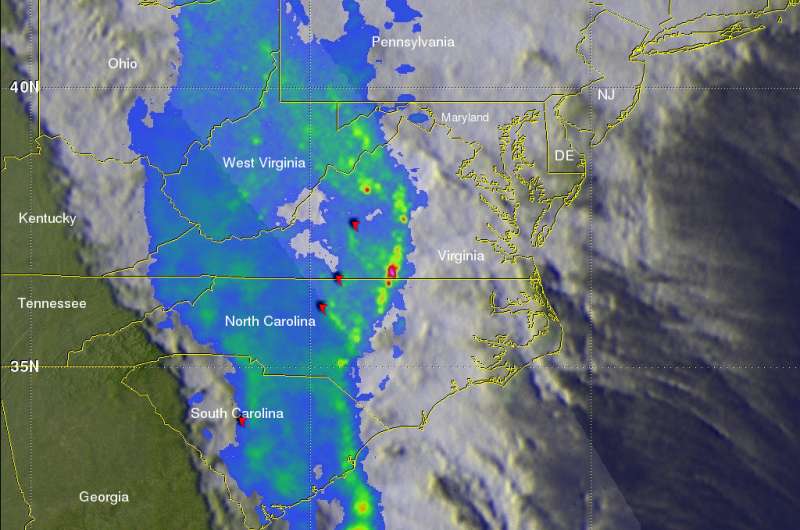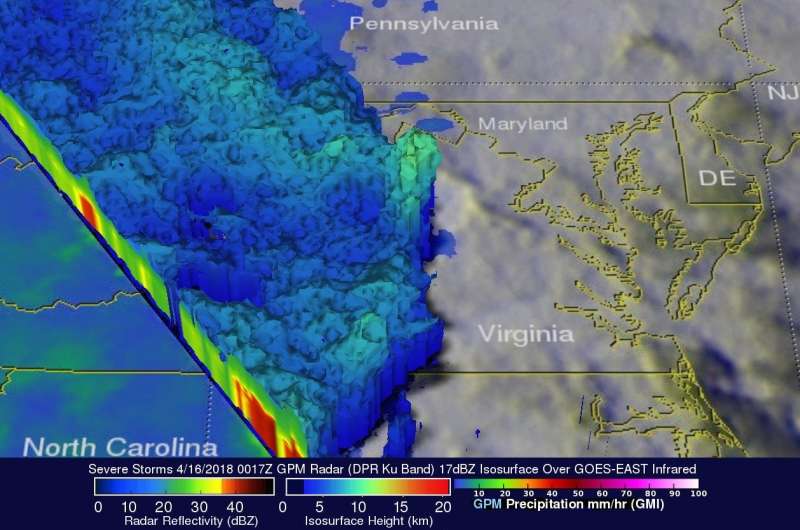GPM catches line of strong storms responsible for tornadoes in eastern US

On Sunday April 15th, a line of strong storms at one point stretched from the Florida Straits below the Florida Keys all the way up the East Coast and into Ohio. The Global Precipitation Measurement mission or GPM core satellite analyzed the severe storms as it passed overhead. GPM is a joint mission between NASA and the Japan Aerospace Exploration Agency, JAXA.
Many of the storms were strong with wide spread reports of wind damage from north Florida up through the Carolinas and into central Virginia. Among these were several reports of tornadoes from Florida to Virginia. The most significant were an EF-2 tornado that stuck Greensboro, NC, killing one person, and a tornado near Lynchburg in Amherst County Virginia that injured 8 people.
GPM captured an image of the advancing line of storms on April 16 at 00:17 UTC (8:17 pm EDT, April 15) about one hour after the tornado was reported near Lynchburg, Virginia. The image showed instantaneous surface precipitation rates estimated from the GPM.
GPM revealed that the storms are organized into a classic squall line with a strong relatively narrow leading line of thunderstorms producing heavy rain rates followed by a much broader area of light to moderate. This leading line has a wave-like pattern.
Often, stronger storms can be found where the line bows forward. A 3-D perspective of the storms from GPM data revealed areas of higher cloud tops over central (up to 10.8 km) and southern Virginia where thunderstorms were active.
The storms and severe weather were spawned by a deep trough of low pressure west of the Appalachians over the Middle Mississippi Valley that stretched all the way down into the central Gulf of Mexico. Ahead of the trough, strong southerly winds drew warm, very moist air up from the Gulf while just enough directional wind shear aloft allowed storms to rotate and spin up tornadoes.
This same storm system was also responsible for bringing record breaking snowfall to parts of the upper Midwest. Minneapolis/St. Paul reported nearly 15 inches of snow, which set the record for their largest April snowfall. The storm brought six plus inches of snow to parts of Nebraska, South Dakota, Iowa, Minnesota, Wisconsin and Michigan.

Provided by NASA's Goddard Space Flight Center

















